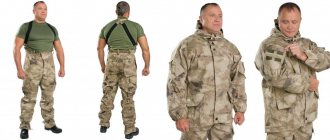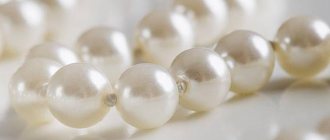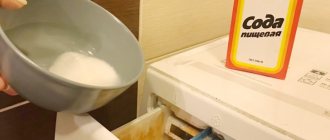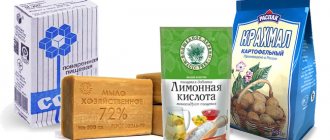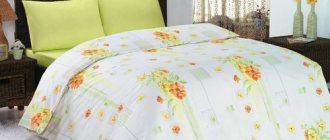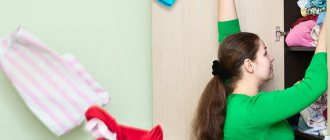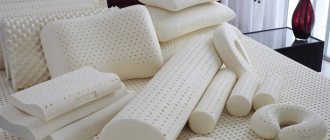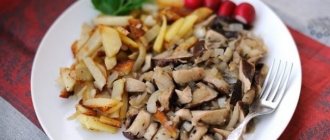Author's rating
Articles written
703
Author of the article
Vasily Mikhailovich Sviridov
home appliance repair technicians Salary from 80,000 rubles!
Published: 10/18/2018
Modified: 10/18/2018
Reading time: 5 minutes
This article has: (i)
Washing white clothes has its own nuances. Therefore, the question of how to wash them in a washing machine worries many housewives. Are you one of them? Read the article carefully. We will try to consider in as much detail as possible the basic rules for washing white, both in a machine and by hand.
Preparatory stage
Sorting
Before moving directly to the process, you should:
- Sort laundry by color. Place white on the right side and colored on the left. You shouldn’t put them in the machine together: bright fabrics can fade and stain light ones.
- Remove all foreign objects from your pockets that could stain your items. It is also worth fastening the zippers and pockets, and removing the straps.
- Sort fabrics by type. For example, cotton T-shirts and a white silk blouse need to be washed differently, taking into account the permissible temperature conditions. Clothes made from delicate materials prefer to be washed by hand in warm, non-hot water - that is, the temperature should not be higher than 30-40 degrees).
- Sort by degree of contamination. Not very dirty items can be immediately thrown into the washing machine by turning on a suitable washing program. Clothes with greasy or other stubborn stains will need to be pre-soaked.
- It is recommended to turn socks, stockings, knitwear and bedding inside out first. Place panties, T-shirts and bras in special bags.
Soak
Any, the most modern and expensive automatic washing machine (AWA) will not cope with stubborn stains. They will have to be removed by soaking.
Fill a basin with warm water at a temperature no higher than 30-40 degrees and add a small amount of powder, bleach or stain remover - the popular Vanish will do. Let the chemical dissolve. Soak things in the solution for 2-3 hours. Afterwards, drain the soapy water, rinse the clothes in clean water and send them to the SMA.
Never soak in hot water. The stains will “cook” even more and will be much more difficult to remove.
Are the stains gone? Apply a small amount of stain remover to the stain itself and let sit for 15-20 minutes. Afterwards, lightly rub the stain, rinse the product and safely put it in the washing machine.
Not only powders and stain removers, but also other products created by manufacturers for other purposes can cope with particularly stubborn stains. We're talking about:
- Dishwashing detergents;
- Laundry soap.
Fairy dissolves greasy stains perfectly. The manufacturer has created an ideal product for breaking down fats.
Laundry soap removes complex stains of all types and types.
other methods
Many housewives use another rather unusual method of whitening - in the microwave. Kitchen towels are usually “washed” this way. First, they are soaked with water straight from the tap. Next, lather it with laundry soap, wrap it in a plastic bag and... put it in the microwave for 1.5 minutes. The effect of this whitening is simply amazing.
Microwave helps whiten kitchen towels
An even more unusual way is to bleach kitchen towels using sunflower oil. The recipe is simple. For 10 liters of water you will need 1.5 tbsp. l. sunflower oil, about 30 ml of bleach and the same amount of soda. Pour the mixture directly onto dry laundry and leave for 10 hours. Then the towels need to be washed, rinsed first in hot, then in warm and finally in cold water. Whitening with sunflower oil helps remove even the oldest stains.
As you can see, bleaching clothes at home is not difficult at all. Now you don’t have to throw away your favorite blouse, T-shirt or shirt just because it has turned yellow with age or is not as rich white as it once was.
How to choose the right program
Many housewives are lost when choosing a suitable program. Experts advise choosing depending on the type of fabric. Are you struggling to keep your cotton clothes white? The cotton program is the best solution. For synthetic clothing, the “synthetic” mode is suitable.
When washing items whose composition is questionable, use the “synthetic” or “delicate wash” mode.
Don't forget to set the desired temperature and spin level. Avoid intensive ironing - it spoils particularly “delicate” fabrics and can make further ironing difficult, severely crumpling things.
At what temperature should I wash?
Let's take a closer look at the temperature regime. When choosing the optimal one, consider the minimum acceptable.
For example, in a pile of sorted clothes there are things that can be cleaned at a temperature no higher than 40 degrees. Other products tolerate 60 degrees well. When setting the temperature, select the minimum temperature of these values - 40 degrees.
Cotton without synthetic impurities is even allowed to be boiled. Almost all machines have a temperature maximum of 90-95 degrees. Want perfect whiteness? Feel free to choose intensive heat treatment.
Flax is more “capricious” and does not tolerate temperatures above 40 degrees.
The best way to wash: popular powders for snow-white laundry
Today there is a huge range of laundry detergents on sale. You can buy the right one at a household chemicals store or supermarket.
Use chemistry from proven brands of imported and domestic production. The best solution is Ariel, Tide, Persil, BiMax. Myth and Biolan wash white well.
When buying a powder, make sure that it is indicated for white. The manufacturer adds additional bleaches to such products.
Do not buy cheap chemicals of questionable quality. It is unlikely that you will be able to achieve flawless whiteness using them.
The best bleaching methods to keep your laundry snow-white
To restore the snow-whiteness of things, you can use several methods to solve the problem:
- use of folk recipes;
- use of household bleaching agents;
- boiling.
The bleaching of children's clothes deserves special mention. For these purposes, boiling with laundry soap can be used (if the product can be treated this way) or the use of special children's bleaches, for example.
Each bleaching method has limitations that must be taken into account so as not to spoil the product.
Boiling
Using boiling can not only whiten things, but also remove dirt and refresh fabric. It may be allowed to expose only products made of dense cotton or linen fabrics that do not have a complex cut, decoration or inserts from other materials.
For boiling you will need:
- large enameled container (about 10 liters in volume);
- detergent (laundry soap - 1-2 pieces);
- device for mixing things.
It is not advisable to use galvanized and aluminum pans for boiling, since as a result of the chemical reaction of the detergent with the metal, difficult-to-remove stains may appear on the fabric.
Also, when washing, you should not replace laundry soap with washing powder - during the boiling process, fumes harmful to humans will be released into the air. In addition, most washing powders are not designed for heating above +95ºС.
Procedure:
Grate laundry soap.- Pour water into a container.
- Place the container on the fire.
- Add grated soap.
- Stir until completely dissolved.
- Place the laundry in the water.
- Stirring occasionally, bring the cleaning solution to a boil.
- Reduce heat.
- Continuing to stir things, boil them for 1-1.5 hours.
- Leave things to cool.
- After washing, rinse and dry.
To enhance the effectiveness of boiling, you can add 2 tbsp to the soap solution. l. hydrogen peroxide. An alternative option is to add 10 tbsp. l. soda
It is advisable to use the container used for boiling things only for household purposes, and not for food.
Use of household chemicals
In addition to chlorine-containing bleaches, modern housewives have products in their arsenal that act gently without damaging the fabric. They can be used for washing, and can also be added to washing powder as an addition to increase washing efficiency.
These bleaches include:
- "Vanish";
- "BOS plus" and others.
Regular use of bleach will keep things white.
Folk recipes
A simple way to make bed linen and T-shirts white is to add 1 tbsp. l. soda into the washing powder compartment of the machine. You can also add soda to the powder during manual processing.
Soaking in a solution with ammonia will also help to whiten things:
Combine 2 tbsp in a bowl. l. ammonia and the same amount of soda.- Mix.
- Pour into a basin.
- Fill with water (5 l.).
- Mix.
- Place the laundry in the basin.
- Leave for a couple of hours.
- Rinse.
- Wash as usual.
How to wash white clothes with bleach?
To give clothes a dazzling whiteness with a slight blue tint, use store-bought bleaches. They will help you wash light-colored items as efficiently as possible and get rid of yellowness, if any.
Popular and affordable options are BOS plus and Vanish bleach.
Do not use chlorine. It leads to damage to the fabric structure and premature deterioration of things.
To wash children's clothes, use special powders and bleaches. For example, from the “Eared Nanny” series.
What washing powder to wash white clothes with?
For safe washing of white clothes, BELIVE ECO washing powder with an additive for washing white has been developed.
This is a phosphate-free washing powder based on natural soap. It carefully and safely bleaches and washes white items.
After white items have been washed, they should be dried in the sun. The sun is the most effective bleach for white clothes. If you leave white items in the sun for a few days, they will return to their original whiteness.
Handwash
We figured out how and what to wash white in a washing machine. Now let's talk about hand washing.
Experts advise hand-washing white items that require delicate care - for example, shirts made of thin fabrics, blouses, etc.
General rules:
- The water temperature should be between 30 and 60 degrees;
- Before the main stage, you need to soak the clothes in a basin of warm water for a couple of hours, after rubbing them with laundry soap;
- Particular attention should be paid to the most contaminated areas - thoroughly rub them against each other;
- Use hand washing powders and gel formulations.
At the end of washing, rinse the laundry thoroughly in clean, cool water at least 2-3 times.
Rules of application
Use the automatic white powder in accordance with the instructions given on the package.
All products intended for washing machines have low foam formation. This is achieved by using defoamers. Such powders are better rinsed during automatic processing and do not harm the washing machine itself.
Standard use for powders:
- The required amount of product (according to the instructions on the packaging) is poured into the machine’s cuvette, into the compartment for the main washing cycle.
- The mode is set.
- The heating temperature and other parameters are adjusted, if necessary.
Most white laundry detergents can handle higher temperatures than color detergents.
